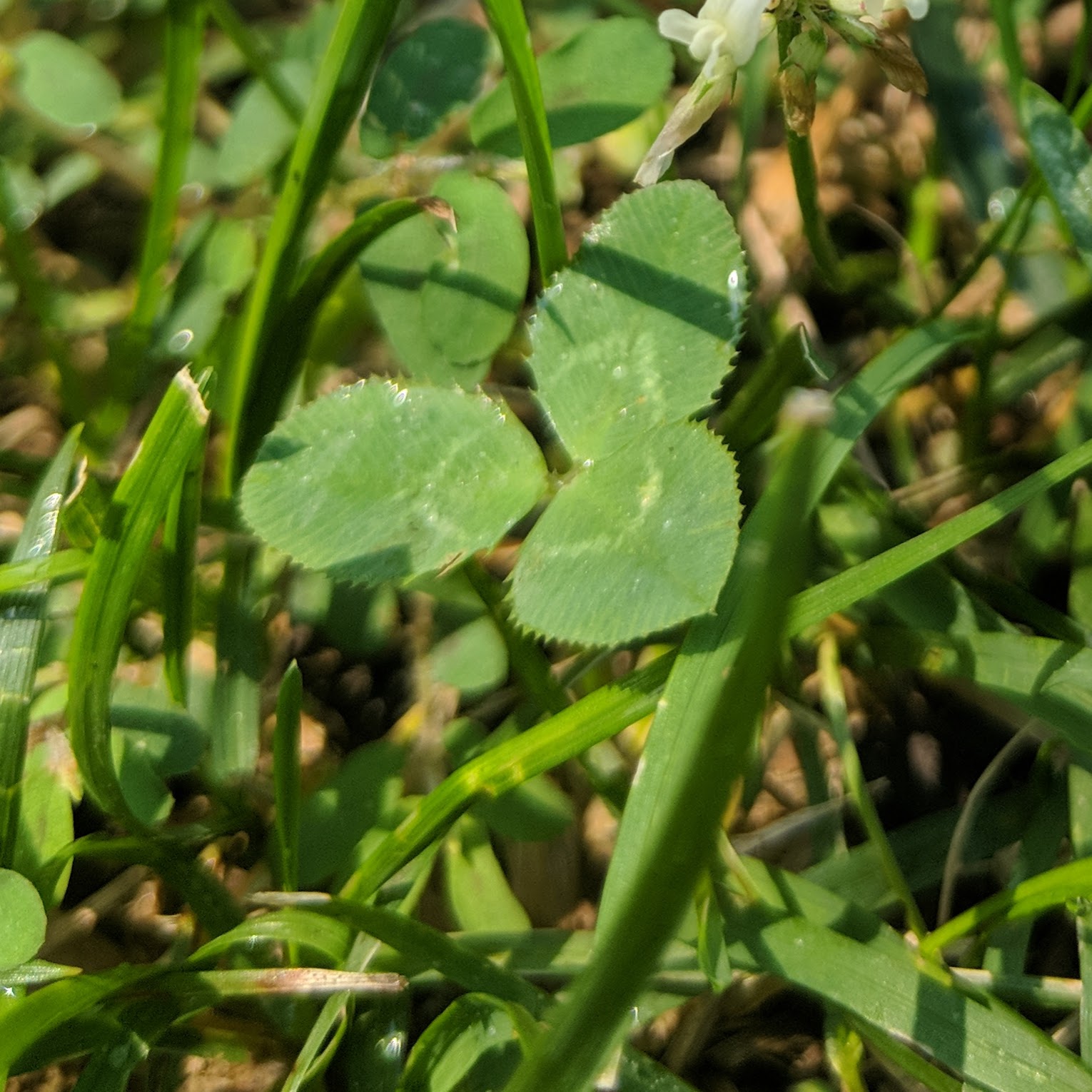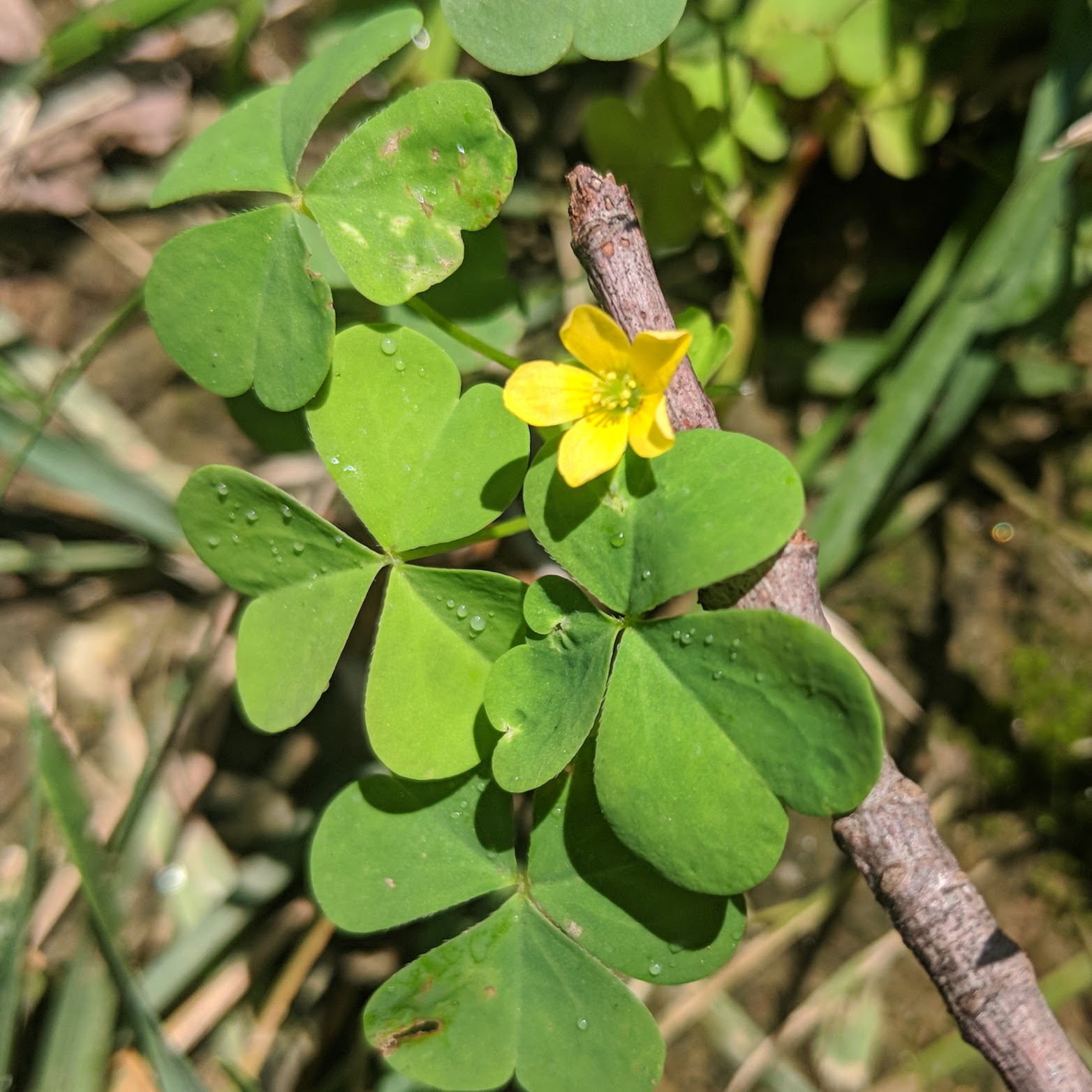Clover
To most homeowners, clover is an unwelcomed pest that ruins their perfect lawn. However, clover has some pretty cool characteristics that you don’t normally see in plants of any kind. Learn a little more about this lawn pest and decide for yourself if clover is a nuisance or a friend.
When I was at the University of Maryland, College Park, one of my turfgrass professors studied, micro clover extensively. Up until that point of my life, I had always imagined clover as the enemy. After learning a little bit more about the plant, my sentiment has softened.

Identifying Clover
Most of you already know what clover looks like, so I don’t want to beat a dead horse. It is the 3-leafed weed that is always ruining the perfect stand of grass. However, there are a few subtle details about clover that may mislead you into thinking another plant is clover. Learn the nuances and never misidentify another plant for clover again!
As you know most clover has 3 leaves. What you probably didn’t notice, is the faint “smoke ring” that is around each leaf. The leaves are also serrated on the side, instead of smooth. This is the identifying characteristic that I always use to identify this weed.
One more thing you should notice is the puffy white flower, that blooms on the clover plant. There is another type of clover, red clover, that has a similar flower that is a faint red color. Use these two identifying marks to find clover every time!

Why is clover so cool?
Clover is a unique plant because it actually fixates nitrogen. Most plants, including your lawn, suck all of the nitrogen out of the soil and use it as nutrients for growth. Clover, on the other hand, pumps more nitrogen into the lawn. That is why clover usually has a magnificent green color.
Just because clover fixes nitrogen in the soil doesn’t mean everyone is going to start growing it, though. however, there is a really cool variety of a micro clover that has very small leaves, grows close to the ground, and grows more evenly and dispersed than normal white clover.
Why is this interesting? Because micro clover is almost unnoticeable in the lawn. Bu, since it fixates nitrogen, clover can actually help your lawn retain a more green color. The main disadvantage is common herbicides. All herbicides that I have seen treat clover indiscriminately and kills them along with other weeds.
How can I Get Rid of Clover?
If you have decided that you still dislike clover and want it out of your yard, here is how you can do that without hurting your lawn.
A common broadleaf weed killer, 2, 4-D will eliminate clover. It also kills many other types of weeds as well. Quinclorac, what I typically use to treat crabgrass will also kill clover as well. Simply mix up a solution of either of these chemicals, and spot spray problem areas. If your whole lawn is infested with clover, then you may want to perform a broadcast treatment.
What weed gets mistaken for clover the most?
Yellow wood sorrel is commonly mistaken for clover. To an untrained eye, both plants look very similar, as they both have 3 leaves. But, let me point out some very key differences.
First, the yellow wood sorrel leaf is not an oval like clover, instead, it is more of a heart shape. It is also a lime green color that is typically lighter than clover. Another thing to notice is the lack of a lighter “smoke ring” on the leaves. But, the most dramatic characteristic is the small yellow flower. Clover doesn’t have any yellow flowers!
Note that not all herbicides will treat yellow wood sorrel. For example, quinclorac will kill clover but it does not really affect wood sorrel. That is why proper weed and plant identification is crucial. It prevents us from using excess herbicides that don’t even remedy our issue.

